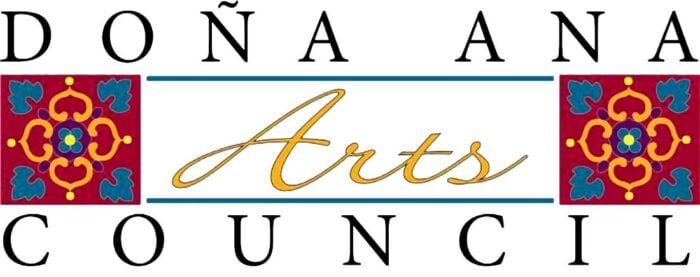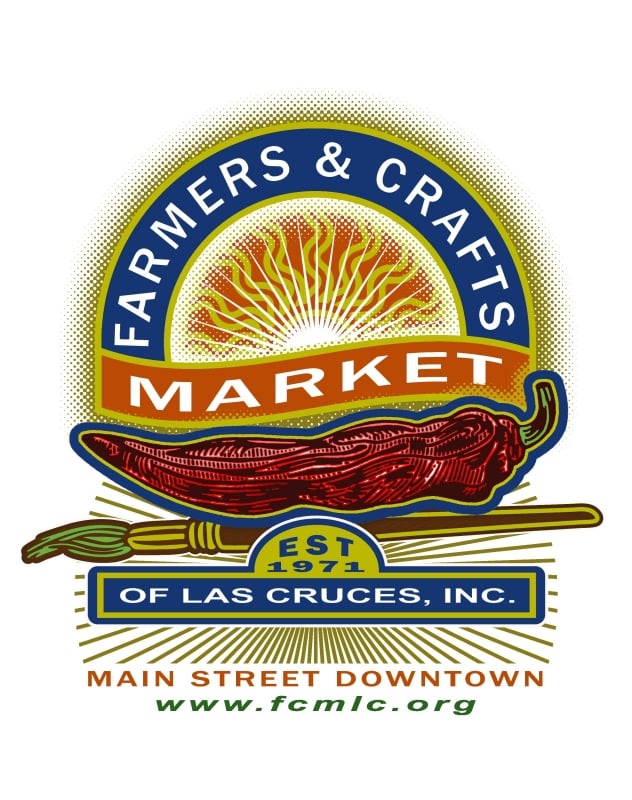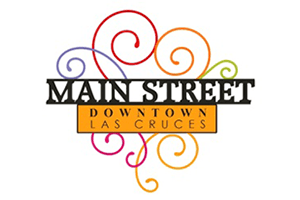The History of The Las Cruces Community Theater by John Hadsell
In the summer of 1963 Michael Coquat, a graduate student in English at NMSU, was substituting for the regular society editor at the Las Cruces Sun News. He had done considerable theater work elsewhere and was chagrined to find that Las Cruces had no community theater. (There had been a theatrical group in town years before, but all that remained of it were boxes of dried greasepaint, some programs, and an ancient curtain with the letters BM — Memorial — once used in the Library’s multi-purpose room.) So Coquat called a meeting to see if there were others interested in community theater. There were. The dozen or so who showed up eventually decided to put on a show — a la Garland and Rooney perhaps.
Their first production — if it can be called that — was planned to appear in St. Genevieve’s churchyard, for lack of any other available space. At that time the Church was directly across from the present Rio Grande Theater. The performance on October 5 and 6 was of the medieval play “Noah’s Flood” and was directed by Bill Alford. The new group somehow located enough actors, folks to do make-up, build a stage, sew costumes and cajole their friends into taking a chance on seeing something strange and unusual. The play ends with God’s benediction, in this case delivered from on high (the roof of the Church) by non-other-than Coquat himself. (Let there be Light and there was Light. Or — rather — let there be a Las Cruces Community Theater.) The effort, though, was hardly financially successful. Only $5 showed up in the collection box. Even so, people were encouraged enough to want to do another show.
But where? For this there was no message from on high. Someone, though, remembered that an old theater in Mesilla was apparently empty. It had once been called The Fountain of Joy but now was merely The Fountain Theater and was owned by Arthur Fountain who ran a bar and restaurant across the street. The survivors of the flood must have seemed pathetic enough to persuade Mr. Fountain that they could rescue his theater from its fate as a storage room and get the Fountain of Joy flowing again — used as they were to control the waters, Okay he said, but they must clean it up and find other storage space for his old refrigerators, dried chiles, and ancient movie projectors. Meanwhile, he would let them mount their second production in the ballroom of his bar! It turned out to be “The Man in the Dog Suit” and starred Bill Alford and Carol Dunn and was directed by Michael Coquat. Guided by new member Jerry Hartger, an architect, they built a sturdy stage, and though the play was well-received, they learned that they must remove all the lumber completely before Saturday night. Uh — easy, of course, they would just carry it across the Street to The Fountain Theater to become the set for “The Silver Whistle,” their first real theater production four months later. These were, however, still difficult times.
The assassination of President Kennedy literally froze all activities in the country for weeks. And then the cleaning and refurbishing of the Theater along with the creation of a suitable stage and another restroom by day were to be done by the same people who were rehearsing the play at night. But from the time when in April 1964 the BM curtain went up on “The Silver Whistle” to the time in 1977 when LCCT moved from Mesilla to Las Cruces it established itself as an active and popular organization.
Note: The archives for LCCT can be found in the Rio Grande Historical Society Archives in Branson Library on the New Mexico State University campus. Stored there are 15 scrapbooks of photos and newspaper copy, programs, and slides from many shows, ending with 1993 (for the 30th Reunion). The material cannot be taken from the Archives, but the librarians will see that you get the information you want. Call 646-4727 for more information on the Archives.















